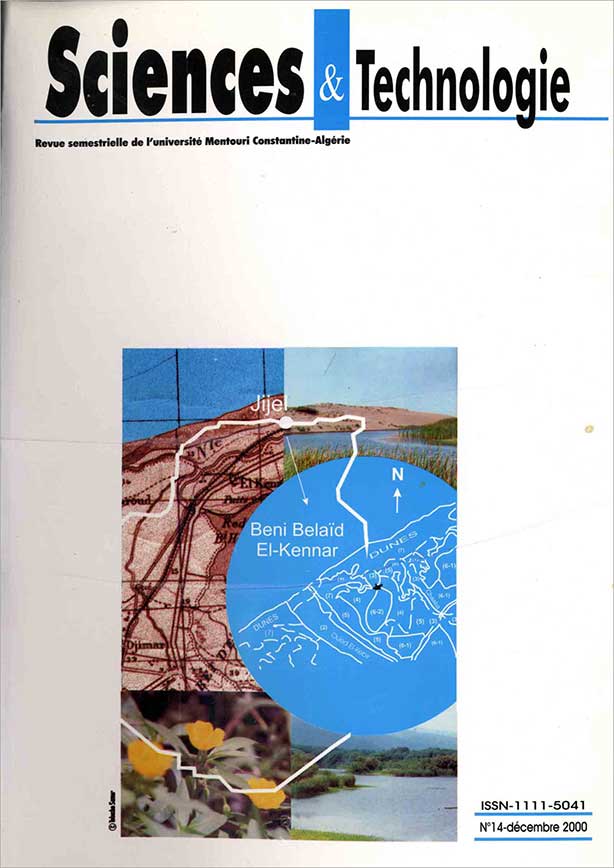PHENOTYPIC CHARACTERISATION AND GENETIC ANALYSIS OF MUTANTS OF ASPERGILLUS NIDULANS RESISTANT TO THE FUNGICIDE TOLCLOFOS-METHYL
Keywords:
Aspergillus nidulans, tolclofos methyl, fungicide resistance, dicarboximideAbstract
Spontaneous mutants of Aspergillus nidulans were recovered from 0,55.10+7 conidia incubated on synthetic medium supplemented with 100 mg tolclofos-methyl/ml. They differed considerably in morphology, growth rate, and level of resistance to two other fungicides. All mutants tested were cross-resistant to quintozene and vinclozolin; they produced fewer conidia than their wild-type parent. Some mutants required fungicides for maximum growth. Genetic analysis revealed that the mutants carried mutations in one gene located on linkage group III.Downloads
References
- Leroux P. and Fritz R., "Antifungal activity of dicarboximides and aromatic hydrocarbons and resistance to these fungicides. In Mode of Antifungal Agents", (1984), pp. 207-237. Edited by A.P.J. Trinci & J.F. Ryley. Cambridge: British Mycological Society.
- Grindle M., "Genetic basis of fungicide resistance". In: Combating Resistance to Xenobiotics-Biological and Chemical Approaches", (1987), pp. 74-93. Edited by M.G. Ford, D.W. Holloman, B.P.S. Khambay & R.M. Sawicki. Chichester, England: Horwood.
- Grindle M., "Isolation and characterization of vinclozolin resistant mutants of Neurospora crassa", Transactions of the British Mycological Society, 82, (1984), pp. 635-643.
- Van Tuyl J.M., "Genetics of fungal resistance to systemic fungicides", Mededelingen Landbouwhogeschool Wageningen 77 (2), (1977), pp. 1-136.
- Katan T., Shabi E. and Gilpatrick J.D., Genetics of resistance to benomyl in Venturia inaequalis isolated from Israel and New York, Phytopathology, 73, (1983), pp. 600-603.
- Dekker J. "Resistance". In "systematic fungicides", (1977), pp. 176-197, Edited by R.W. March, London: Longman.
- Franklin T.J. and Snow G.A., "Biochemistry of antimicrobial action", London, Chapman and Hall Ltd (1989).
- Orth A.B., Sfarra A., Pell E.J. and Tien M., "A serine
(threonine) protein kinase confers fungicide resistance in the phytopathogenic fungus Ustilago maydis", Appl. Environ. Microbiol., 61, (1995), pp. 2341-2345.
- Choi G.J., Lee H.J., and Cho K.Y., "Lipid peroxydation and membrane disruption by vineclozolin in dicarboximide-susceptible and -resistant isolates of Botrytis cinerea", Pestic. Biochem. Physiol., 55 (1), (1996), pp.29-39.
- Andrade A.C., Del Sorbo G., Van Nistelrooy J.G. and Waard M.A., "The ABC transporter AtrB from Aspergillus nidulans mediates resistance to all major classes of fungicides and some natural toxic compounds", Microbiology, 146, (2000), pp. 1987-1997.
- Georgopoulos S.G., "Cross resistance". In: "Fungicide resistance in crop protection", (1982), pp. 53-59, Edited by J. Dekker & S.G. Georgopoulos, Wageningen, Netherlands: Pudoc.
- Clutterbuck A.J., "Aspergillus nidulans", In: "Handbook of genetics", vol. 1, (1974), pp. 447-510. Edited by R. C. King. New York: Plenum Press.
- Clutterbuck, A.J. "Gene symbols in Aspergillus nidulans", Genetical Research, 21, (1973), pp. 291-296.
- Pontecorvo G., Roper J.A. , Hemmons L.M., Macdonald K.D. and Bufton A.W.J., "The genetics of Aspergillus nidulans", Advan. Genet., 5, (1953), pp. 141-238.
- McCully, K.S. and Forbes E., "The use of p-fuluorophenylalanine with master strains' of Aspergillus nidulans for assigning genes to linkage groups", Genet. Res., 6, (1965), pp. 352-359.
- Grindle M. and Zhou Y., "Isolation, characterization and genetic analysis of mutants of Aspergillus nidulans resistant to tolclofos methyl", Proceeding of the British Crop Protection Conference-Pest and Diseases, (1988), pp. 409-414.
- Threlfell R.J., "The genetic and biochemistry of mutants of Aspergillus nidulans resistant to chlorinated nitrobenzenes", J. Gen. Microbiol., 52, (1968), pp. 35-44.
- Beever R.E., "Osmotic sensitivity of fungal variants resistant to dicarboximide fungicides", Transactions of the British Mycological Society, 80, (1983), pp. 327-331.
- Chabani A.W. and Grindle M., "Isolation, characteization and genetic analysis of mutants of Aspergillus nidulans resistant to the herbicide diclobenil", Mycological research, 94 (4), (1990), pp. 523-528
- Grindle, M. and Temple W., "Fungicide resistance of os mutants of Neurospora crassa", Neurospora Newsletter, 29, (1982), pp. 16-17.
- Beever R.E. and Byrde R.J.W., "Resistance to the dicarboximide fungicides". In: "Fungicide Resistance in Crop Protection", (1982), pp. 101-117. Edited by J. Dekker & S.G. Georgopoulos. Wageningen, Netherlands: Pudoc.
- Ellis S.W., Grindle M. and Lewis D.H., "Synthesis of sugar alcohols by dicarboximide-sensitive and -resistant strains of Neurospora crassa". Proceeding of the British Crop Protection Conference-Pest and Diseases, (1986), pp. 575-581.
- Caddick M.X. and Arst H.N. Jr., "Structural genes for phosphatases in Aspergillus nidulans", Genet. Res. Camb., 47, (1986), pp. 83-91.
- Martinez-Rossi N.M. and Azevedo J.L., "Two-way selection of mutants and revertants to chloroneb resistance in Aspergillus nidulans", Mut. Res., 96, (1982), pp. 31-39.
- Clutterbuck A.J., "Revised allelism relationships among Aspergillus nidulans meth and gal mutants", Fungal Genetics Newsletter, 34, (1987), pp. 27-28.







